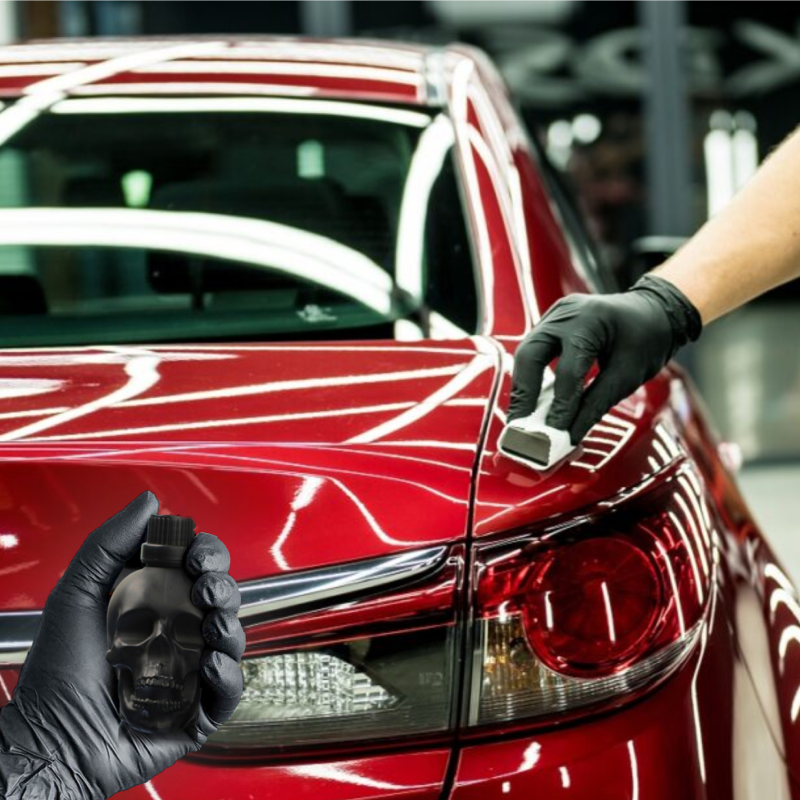Get certified paint protection film installation to block rock chips and scratches.
Get certified paint protection film installation to block rock chips and scratches.
Blog Article
A Comprehensive Guide to the Kinds of Ceramic Finish on the Market
Ceramic finishings have actually emerged as a pivotal remedy throughout different sectors due to their one-of-a-kind residential properties and applications. As we explore the unique attributes and applications of these finishes, the ramifications for efficiency and durability come to be progressively evident, elevating concerns about which type may ideal suit your requirements.
Comprehending Ceramic Coatings
Ceramic finishes are advanced safety solutions that have gained popularity in different industries, particularly in automobile and aerospace applications. These layers contain a fluid polymer that, when cured, creates a durable, hydrophobic layer on the surface area of the substratum. This layer offers enhanced resistance to ecological impurities, UV radiation, and chemical exposure, thus extending the life and aesthetic allure of the underlying product.
The basic element of ceramic finishings is silica, which adds to their solidity and resilience. The application procedure normally involves surface area prep work, application of the coating, and curing, which can be achieved through warmth or UV light. When treated, ceramic layers display phenomenal bonding buildings, permitting them to adhere strongly to a variety of surface areas, including steels, plastics, and glass.
Along with their safety attributes, ceramic finishings also supply ease of maintenance. Their hydrophobic nature minimizes the adherence of dirt and grime, making cleaning simpler and less frequent. Generally, the adoption of ceramic layers stands for a significant development in surface security technology, giving both practical and visual advantages throughout multiple sectors.
Kinds Of Ceramic Coatings
Various kinds of ceramic finishings are readily available, each designed to satisfy details performance requirements and applications - Auto Detailing. One of the most usual kinds include:
Silica-based Coatings: These layers mainly contain silicon dioxide and are known for their toughness and chemical resistance. They are commonly made use of in auto and industrial applications.
Titanium Dioxide Coatings: Distinguished for their photocatalytic properties, titanium dioxide coatings are frequently applied in atmospheres where self-cleaning and antifungal homes are preferable, such as in building materials and automotive finishes.
Zirconia Coatings: Defined by their high-temperature stability and thermal resistance, zirconia coverings are utilized in applications such as generator engines and high-performance automotive parts.
Alumina Coatings: Showing exceptional hardness and thermal security, alumina finishings are often used in wear-resistant applications, consisting of reducing devices and industrial equipment. - Paint Protection Film
Hybrid Coatings: Integrating the residential properties of numerous materials, crossbreed finishings visit here offer enhanced performance features, making them suitable for special and demanding applications.
Each kind of ceramic coating offers unique objectives, permitting individuals to pick the most appropriate remedy based upon particular environmental conditions and performance requirements.
Benefits of Ceramic Coatings
Ceramic finishes, in specific, deal countless benefits that make them significantly prominent amongst producers and customers alike. These coverings are resistant to scratches, chemicals, and UV rays, ensuring that the underlying surface remains protected over time.
In addition to longevity, ceramic coverings offer outstanding hydrophobic residential or commercial properties, allowing for very easy cleaning and maintenance. This water-repellent nature minimizes the adherence of dirt, grime, and various other impurities, which can extend the visual appeal and performance of the surface area. Ceramic finishes can considerably improve thermal resistance, making them optimal for applications that endure high temperature levels.

Application Process
When using ceramic coverings, a thorough strategy is important to achieve optimum results. The application process normally begins with extensive surface area preparation. This entails cleaning, decontaminating, and brightening the surface area to eliminate all pollutants, including dirt, grease, and prior waxes or sealers. A clean surface area ensures appropriate bond of the layer.
When the surface area is prepped, the following action is to apply the view it ceramic layer. The finish should be used in slim layers, as thicker applications can lead to unequal surfaces.
After application, the finish needs a details curing time, commonly ranging from a couple of hours to a full day, depending on the item. Complying with these actions vigilantly will make the most of the efficiency and durability of the ceramic finish, giving a durable protective layer for the surface area.
Maintenance and Long Life
To make certain the durability and performance of a ceramic finish, regular maintenance is crucial. Ceramic finishes, understood for their longevity and safety top qualities, require details care regimens to he said optimize their life-span and efficiency. The very first step in maintenance includes regular washing with pH-neutral soap, staying clear of severe chemicals that can deteriorate the finishing. It is suggested to clean the lorry consistently, preferably every two weeks, to prevent the buildup of contaminants that can jeopardize the layer's integrity.
Along with routine cleaning, periodic inspections are crucial. Look for indications of wear or damage, such as hydrophobic residential or commercial properties reducing or surface flaws. If required, a light gloss might be put on invigorate the coating without removing it away.
In addition, the application of a booster spray can enhance the finish's hydrophobic effects and restore its gloss. This is particularly helpful for finishings that have remained in use for an extended period. Inevitably, by sticking to these maintenance techniques, one can substantially prolong the life of a ceramic coating, guaranteeing that it remains to give optimal protection against ecological variables and preserve the aesthetic appeal of the vehicle.
Conclusion

Report this page